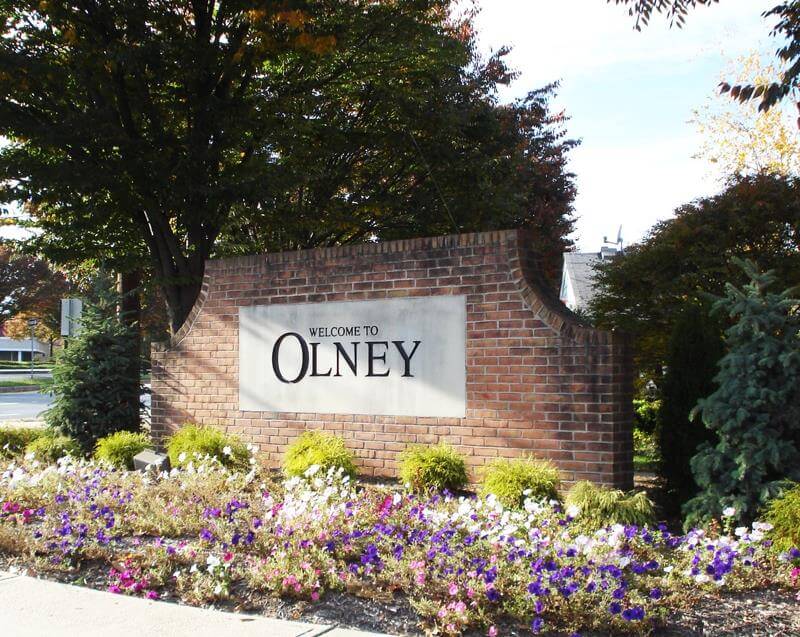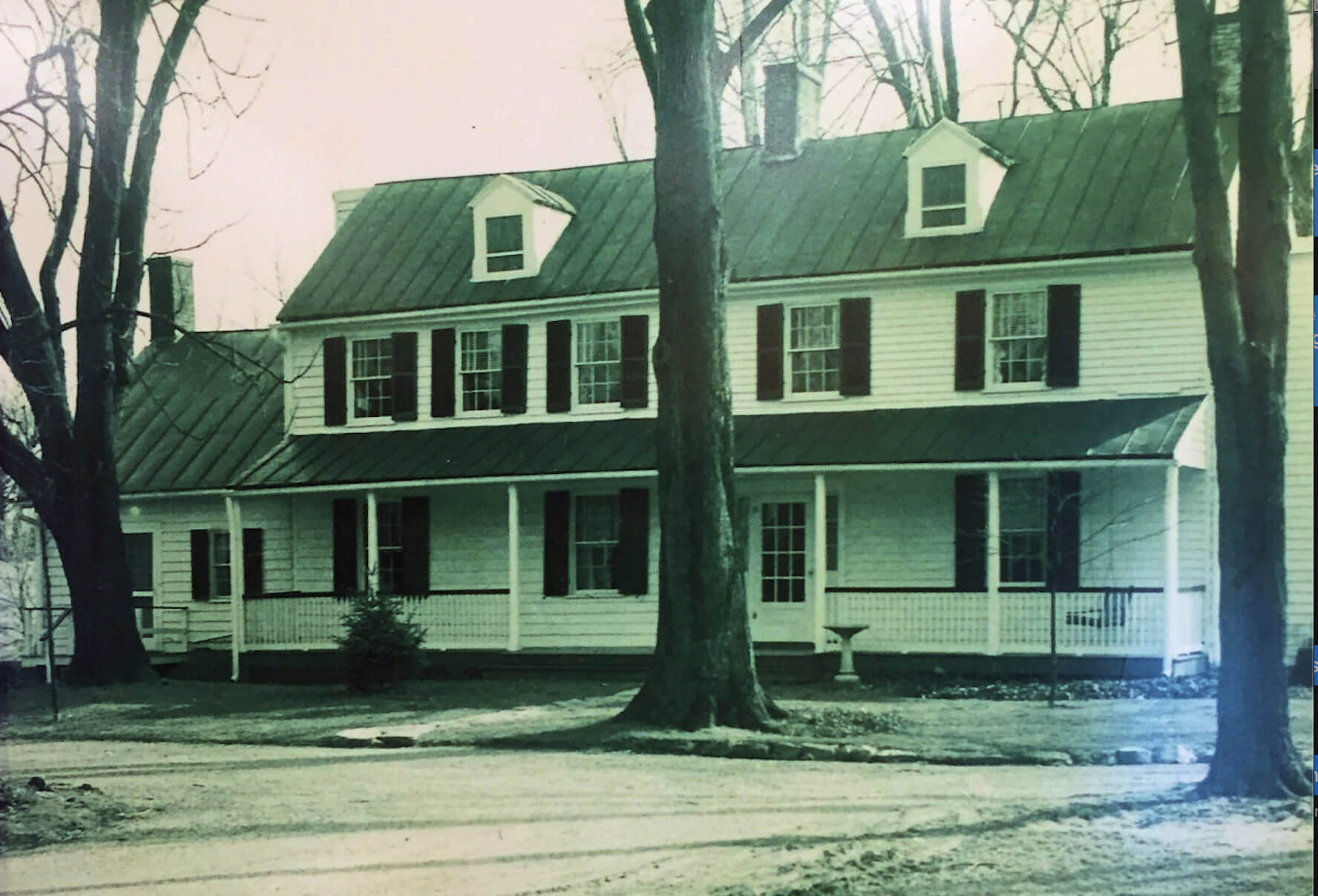 Olney no longer resembles the sleepy rural crossroads village of the 1700s. While the intersection of Maryland Routes 108 and 97 (George Avenue) still form the town's commercial core, the present Olney is home to more than 250 businesses and more than 30,000 residents. Numerous communities of houses, townhouses and condominiums radiate in all directions from the main intersection.
Olney no longer resembles the sleepy rural crossroads village of the 1700s. While the intersection of Maryland Routes 108 and 97 (George Avenue) still form the town's commercial core, the present Olney is home to more than 250 businesses and more than 30,000 residents. Numerous communities of houses, townhouses and condominiums radiate in all directions from the main intersection.
Farming was the primary occupation of the villagers in 1879, when land sold for a mere four dollars per acre. Surrounding villages were once more prosperous than Olney. Brookeville, just two miles to the north, had a population of 250. It served as the nation's Capital for a Day in August 1814, when the British invaded Washington, D.C. and James Madison fled the White House. To the west is Laytonsville, where 100 families lived. Both communities incorporated in the 1800s.
To the east was a community of Quakers located in Sandy Spring, and this was considered the cultural center of the surrounding villages. Once a stop on the Underground Railroad, Sandy Spring boasted blacksmiths, carpenters, and merchants, as well as three mills which served surrounding residents. Sandy Spring National Bank was established there, along with Montgomery Mutual Insurance Company, and a circulating library.
Now, Olney is the last suburban outpost in upper northeast Montgomery County, with many residents working in Washington, D.C., Baltimore, and even Northern Virginia. Traffic fills the roads that were originally carved for farmers to haul produce to market. Yet Olney has successfully maintained much of its old-time character while it has grown into a modern community.
Taking a closer look, a traveler can find many bits of history, such as an 1817 house built for the farmer who patented the first refrigerator; an 1838 homestead used as a private girl's boarding school, and Civil War bullets and badges hidden in the dirt behind a nearby shopping center. People can raise their families while owning a flourishing business or working right in town.
Olney offers all the amenities of small-town living within easy access to numerous urban attractions in Baltimore and Washington, D.C.
Historical Timeline

1720 - Original land grant of 2,550 acres from King George III
1760 - Area named Fair Hill after construction of first residence
1800 - Olney House built and named after Olney, England (Now Salt & Vine restaurant)
1814 - Brookeville served as the U.S. Capital for one day when President James Madison fled The White House to escape a British invasion
1826 - Mechanicsville Post Office established at Fair Hill, then a Quaker farm
1849 - Tollgates on Brookeville-Washington Turnpike, now Georgia Avenue (Route 97)
1851 - Olney Post Office established
1864 - Rebel and Union soldiers passed through Olney
1880 - Olney population reached 80
1978 - Intersection of Route 97 and 108 demolished for widening
1994 - Olney population reached 29,500
1994 - Brookeville celebrated its Bicentennial
1995 - Montgomery General Hospital celebrated its 75th anniversary
1996 - Completion of Route 108 widening project
1997 - Grand Opening of new Sandy Spring Museum
1998 - Grand Opening of Olney Police Satellite Station
2007 - Money Magazine's Top 100 Places to live: #17
Olney Highlights
- MD Route 200 (the Intercounty Connector), ICC Park & Ride, and Maryland Transit Authority commuter bus (offering shuttle service to BWI airport)
- Glenmont or Rockville red line Metro Stations
- 20 miles to Washington, D.C.
- Julia Brown Montessori Schools
- Norbeck Montessori School
- Oakdale Preschool
- Olney Elementary School
- Belmont Elementary School
- Brooke Grove Elementary School
- Sherwood Elementary School
- Greenwood Elementary School
- Cashell Elementary School
- Rosa M. Parks Middle School
- William H. Farquhar Middle School
- Redland Middle School
- Sherwood High School
- Our Lady of Good Counsel High School
- Magruder High School
- James Hubert Blake High School
- St. John’s Episcopal School
- St. Peter’s School
- St. Patrick’s School
- Washington Christian Academy
- Sandy Spring Friends School
- Olney Adventist Preparatory School
- Olney Manor Recreational Park
- Norbeck Park
- Cherrywood Park
- Greenwood Park
- Southeast Olney Park
- Olney Manor Park
- Olney Manor Dog Park
- Olney Manor Skate Park
- Olney Family Neighborhood Park
- Olney Golf Park
- OBGC Community Park
- Norbeck Country Club
- Montgomery Country Club
- Olney Indoor Swim Center
- Longwood Community Recreation Center
- Ross Boddy Community Recreation Center
- The Adventure Park at Sandy Spring
- Churches
- Religious schools
- Synagogues and congregations
- Temples
- Mosques
- Nondenominational houses of worship
- Olney Theatre Center
- Olney Farmers and Artists Market
- Sandy Spring Museum
- Woodlawn Manor Living History Museum
Olney residents enjoy the charm of a small hometown; at the same time, local activities give the town offers modern amenities. Diverse venues, services, and activities generate a strong community spirit, and the civic/homeowners associations within each neighborhood reinforce this unity by coordinating events and making use of the recreational and educational sites in the area. With so many facilities, there is a greater collective encouragement for involvement and pursuit at all levels. This is why, despite its smaller population size, the town of Olney continuously earns high ranking acclaim as the ideal place to live.
